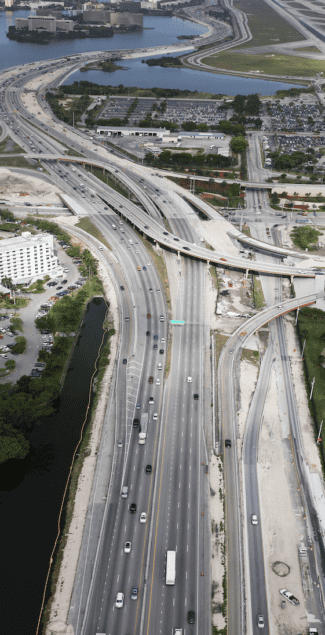|
Getting your Trinity Audio player ready...
|
 People love Miami, but they dislike its poor planning. Unbridled growth in the western and southwestern fringes was allowed to take place without providing a proper transportation infrastructure. The same poor planning encouraged unfettered vertical densification with urban infill to the east, while again ignoring the transportation infrastructure capacity.
People love Miami, but they dislike its poor planning. Unbridled growth in the western and southwestern fringes was allowed to take place without providing a proper transportation infrastructure. The same poor planning encouraged unfettered vertical densification with urban infill to the east, while again ignoring the transportation infrastructure capacity.
A spirit of “Eastward Ho” has transformed our coastal skyline with hundreds of new residential and office towers supported by a 30-year-old transportation network. If the traffic situation isn’t addressed in a comprehensive way, all the economic successes of this gleaming city by the bay will turn to economic collapse.
Miami-Dade County’s most important east-west expressways are SR 112 and SR 836. They connect key economic areas including the airport (MIA), seaport, hospital/courthouse district, downtown Miami, Doral, FIU, and Miami Beach. These highways opened for traffic in 1961 and 1965, respectively, when Miami’s population was less than one million.
As Miami’s local expressway infrastructure aged and rapidly deteriorated, MDX was created to build multi-modal transportation infrastructure. MDX allowed the county to retain 100 percent of local toll revenues, since Miami was not receiving its fair share of the state transportation dollars collected locally.
MDX purchased from the state the operational and financial control of five local east-west expressways for $91 million. If not for MDX’s success, the county would surely be facing gridlock and economic collapse today. Not only has MDX built $1.25 billion in transportation infrastructure for the county, it has also contributed more than $500 million to leverage an additional $3.3 billion in local transportation infrastructure by partnering with the state and county.
In 2007, MDX heralded the opening of the first new extension of an expressway in the county in 20 years. This expansion of the Dolphin Expressway to 137th Avenue reduced the travel time for residents living in West Dade by 50 percent.
MDX’s future projects to extend and connect its expressway network are crucial to the prosperity of MIA, Doral, Opa-locka Airport/North Dade, Miami Executive Airport in West Kendall and Southwest Dade.
MDX is also currently constructing a new ramp connection from SR 874 to West Kendall and the Miami Executive Airport. MDX’s beltway extension of SR 836 along the western fringe of the county southward to SW 136 Street is as important to this community as construction of the Palmetto Expressway or the Homestead Extension. It will allow the Miami Executive Airport to become an important economic engine and employment generator for West Kendall as well as allow other businesses to access the under-served areas of West Dade from Tamiami Trail to SW 152 Street.
The extension of the Gratigny to I-95 and the Turnpike will allow for the successful development of Opa-locka Airport and other businesses like the new Amazon hub along the corridor as it opens up commerce and cargo movements.
The future extension of SR 112/Airport Expressway to connect with the Palmetto and the Turnpike by way of the viaduct in Doral opens up an alternate east-west major corridor.
MDX is not only moving commerce, but in keeping with its original multi-modal mission as authorized by Florida Statute, it is modernizing its local expressway system to accommodate mobility options, which include transit alternatives as well as future technology. MDX is constructing an interconnected network of Xpress Technology Lanes to provide a platform for Bus Express Rapid Transit and to accommodate future autonomous vehicles.
The agency’s Strategic Master Plan is based on multi-modal transportation hubs. It is a concept of wheels and spokes with “wheels” being the Miami Intermodal Center and a series of mini-intermodal hubs throughout the county connected by its “spokes,” the network of local expressways. These all link to Miami-Dade County’s Metrorail system – which ties in seamlessly to Miami-Dade County’s SMART Plan.







Comments are closed.